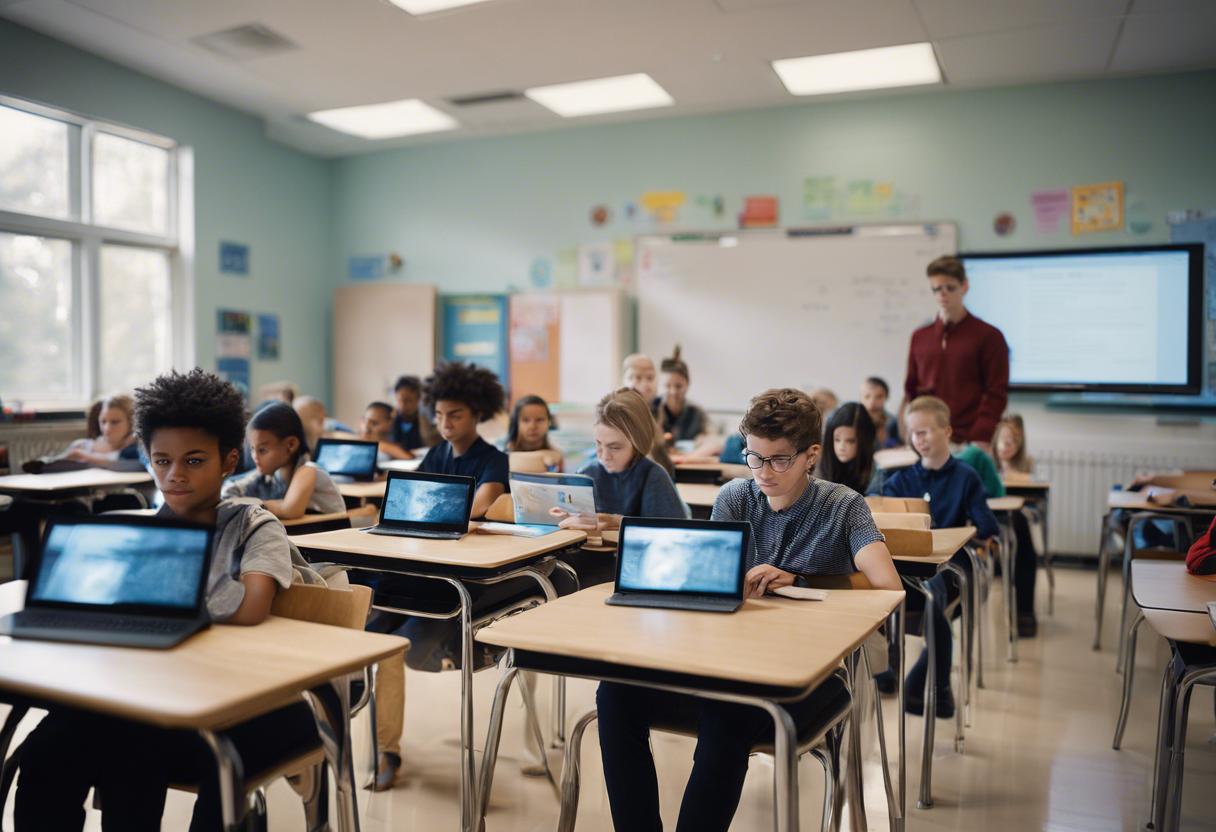Imagine a classroom where every student receives personalized attention, administrative tasks are seamlessly handled, and teachers have more time to inspire and guide their students. The future of AI in education is already here, with schools worldwide incorporating AI-based tools into teaching and administrative processes. This article explores how AI revolutionizes the classroom, impacts teacher-student interactions, and overcomes challenges in ensuring privacy and infrastructure.
Revolutionising the Classroom: The Role of AI in Personalised Learning
Enjoy:
- Over 60 AI tools to create quality content
- More time for creativity, stress-free
- Impactful content that attracts readers and visitors
All with just one click.
The integration of AI in education is revolutionising the classroom by enabling personalised learning experiences for students. With AI-powered tools and platforms, each student can receive individual attention and tailored recommendations based on their unique needs and learning style. Adaptive platforms and progress monitoring systems help educators track students’ progress in real-time, allowing for targeted interventions and support. By harnessing the power of AI, teachers are able to create a more engaging and effective educational environment that caters to the specific needs of each student. This personalised approach not only enhances learning outcomes but also empowers students to take ownership of their education, fostering a sense of independence and self-directed learning.
Beyond Automation: AI’s Impact on Teacher-Student Interactions
AI is not just about automating administrative tasks; it also has a profound impact on teacher-student interactions. By leveraging AI, educators can provide personalized feedback and support to each student, enhancing their learning experience. AI-powered tutoring systems can adapt to individual students’ needs, offering tailored explanations and guidance. This level of personalization fosters a deeper connection between teachers and students, as educators can focus on addressing specific learning gaps and challenges. Moreover, AI facilitates real-time monitoring of students’ progress, allowing teachers to intervene promptly and provide timely interventions. By augmenting teacher-student interactions, AI enables a more individualized approach to education, creating a supportive and engaging learning environment for all students.
Overcoming Challenges: Ensuring Privacy and Infrastructure in AI Education
As schools embrace AI in education, ensuring privacy and infrastructure become crucial considerations. With the collection and analysis of student data, it is essential to establish robust privacy protocols to safeguard sensitive information. This includes obtaining proper consent, implementing secure data storage systems, and adhering to data protection regulations. Additionally, schools must invest in reliable technological infrastructure to support AI integration effectively. Adequate internet connectivity, hardware, and software are necessary for seamless implementation and usage of AI tools. Furthermore, ongoing teacher training is vital to equip educators with the knowledge and skills needed to navigate AI systems safely and responsibly. By addressing these challenges head-on, schools can harness the full potential of AI in education while upholding privacy standards and ensuring a solid infrastructure for its successful implementation.
As AI continues to revolutionize education, the possibilities for personalized learning and improved teacher-student interactions are endless. By harnessing the power of AI, educators can create a more engaging and effective educational environment. However, as we embrace this technology, it is crucial to reflect on how we can strike a balance between automation and human connection in the classroom.
